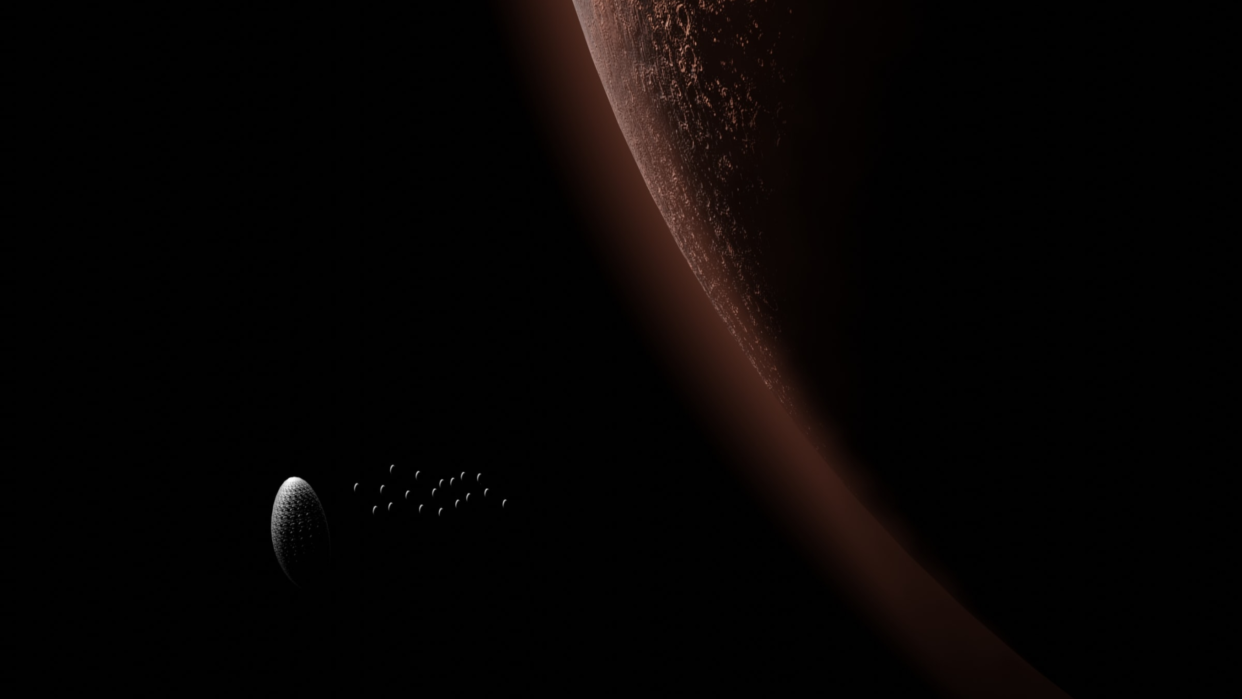Rosotics wants to manufacture massive orbital shipyards using 3D printing

Mesa, Arizona-based Rosotics has kept a low profile. From the startup’s website, one would think they are solely focused on selling large metal 3D printers to aerospace and defense customers.
For the past three years, the company’s been quietly architecting plans that involve launching multiple massive spacecraft, each containing dozens of smaller spacecraft, that would manufacture 3D-printed orbital shipways and propellant depots in low Earth orbit (LEO). Rosotics is betting on a future where orbital infrastructure is not just launched to space but built there, too.
“Halo is essentially the culmination of years of research and development on a very long-term play that we've kept quite secret for a while,” Rosotics CEO Christian LaRosa said in a recent interview. “Halo is designed to print what we describe as carrier vessels. They are essentially our direct-to-market move for on-orbit manufacturing.”
Rosotics is developing these carrier vehicles, large spacecraft it refers to as "motherships," that would measure five meters in diameter. They are being designed to carry over a dozen smaller autonomous spacecraft called R2, which would be constructed from massive aluminum "stations," that could be propellant depots, shipyards or even power generation infrastructure.
Secrecy, as LaRosa noted multiple times throughout our interview, was paramount: "Globally, the number of people who knew the full scope of this equation was maybe three or four, and we had been consulting, developing, testing for quite a while to get there." But with Halo making its debut on the commercial market and the company bringing in revenue, LaRosa decided now was the time to come out with its plans.
LaRosa says the company has developed a unique, highly efficient approach for in-space 3D printing, a process that’s notoriously difficult to translate from its terrestrial applications. It’s an approach that uses induction, via a printer the company calls Reaper, and a process called “cold welding,” in which metals are joined together using little to no heat.
It’s a phenomenon that has been observed in space before — much to the peril of some space missions — because it can occur when two metals touch without a surface layer of oxides between them. (On Earth, those oxides come from the atmosphere.) For space missions, engineers do things like coat the metals with oxides, but Rosotics’ process exploits this chemical process to larger ends.
“Cold welding is something we believe to be the missing link that has prevented [on-orbit servicing, assembly and manufacturing] and effectively anything regarding architecting heavy infrastructure in orbit,” LaRosa said.
The idea is that R2s would, almost in a swarm-like fashion, manufacture structures in orbit and periodically return to the mothership for additional aluminum feedstock. LaRosa said materials could be resupplied to the motherships directly via third-party launch providers or other companies. The mothership could also be used for raising orbits or station-keeping the final structures, or stations, once they're complete.
Each aluminum structure would be heavy and comparable in size to the ISS or larger, he added. LaRosa said the company is 12 to 18 months from production of an integrated spacecraft, which would be built in a yet-to-be-established spacecraft production facility in Boulder, Colorado. It will be two to three years before a spacecraft sees space.
All of this will be costly, but LaRosa credits the company’s ability to do so much on just $2.6 million in funding, from Tim Draper and others, due in part to its location in Mesa, far from the more popular (and expensive) aerospace hubs. The company also plans to fund its plans by selling the Halo printers, which LaRosa likened to the way SpaceX launched its Starlink satellite internet constellation to fund its massive Starship rocket.
“This is not something you could have done on just investment. You need stability of finance and of revenue. Halo is the platform that will, by proxy, fund 'station' and the way we are going to build that."

